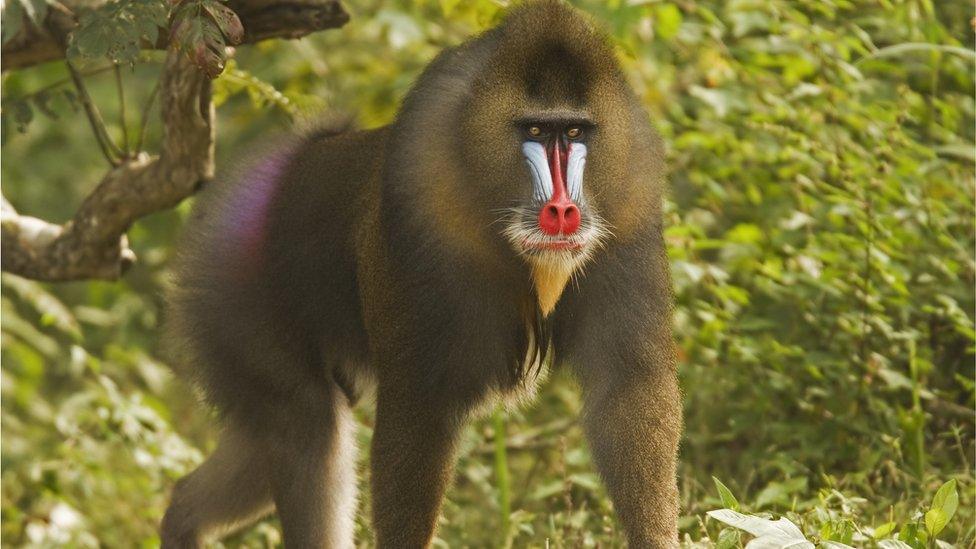Conservation: Re-releasing primates into the wild 'helps their wellbeing'
- Published
- comments

Mandrills are hunted for food or for the pet trade, and are vulnerable to losing habitat
Wildlife experts have shown for the first time that gradually reintroducing primates into the wild improves their wellbeing.
Rescue centres regularly return animals to their natural habitats, on the assumption that it is for the best, and now it has been scientifically proven to reduce their stress levels.
A team of conservation experts studied a group of mandrills that were returned to the wild in a phased programme and found they adapted well.
Research, published in the academic journal Conservation Physiology, showed the mammals' stress response was lower in the wild than it had been when they were living in a sanctuary.
Working in the Republic of Congo, the team transferred 15 mandrills from the Tchimpounga Sanctuary into the Conkouati-Douli National Park.
Mandrills are hunted for meat or for the pet trade, and are vulnerable to losing habitat, so orphaned infants are often taken to sanctuaries to be reared.
Researchers tested the mandrills poo samples for enzymes that show the animals' anxiety levels, and found that - as expected - mandrills found being transported in crates stressful.
Crucially, however, their stress response dropped again over time in special enclosures, which gave the mandrills a safe place to adjust to their new environment.
And their stress levels, crucial to their successful adaptation to their new life, did not rise when they were re-released into the forest.
Many primate releases are conducted based on the assumption that it improves animal welfare, but very few studies have actually tested this.
After a month of living free, the mandrills' stress response dropped below the levels seen while they were in the sanctuary, and after a year the stress response was about half the level it had been in the sanctuary.
The study suggested that having a plan, using sanctuaries carefully and offerings support works well for wild-born mandrills rehabilitated by humans.
The report authors said this very slow and steady process was key to successful reintroductions.
